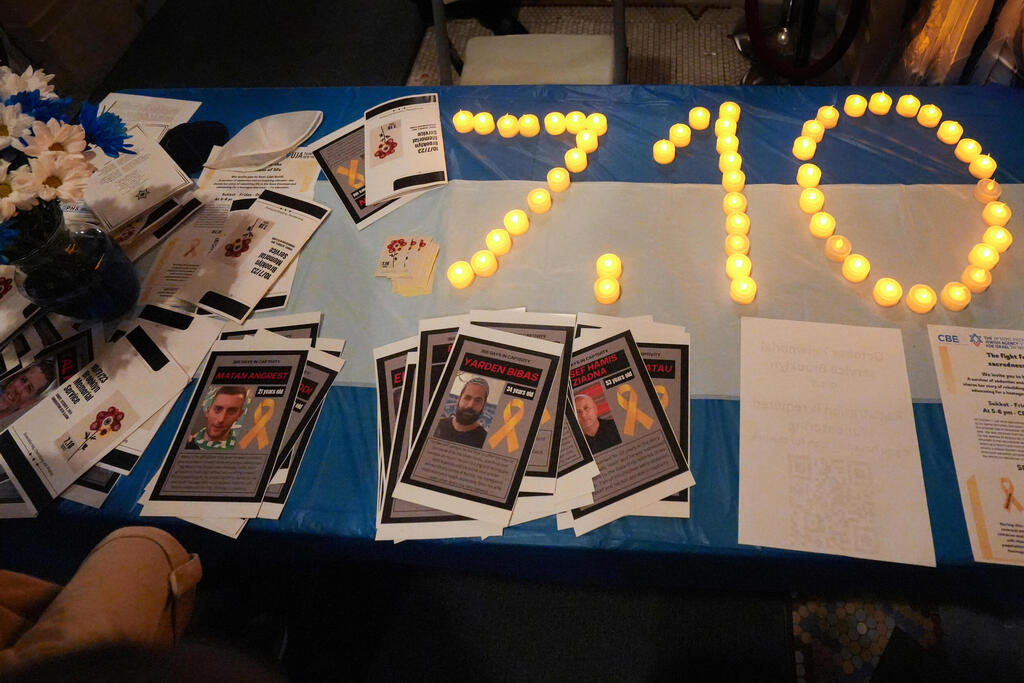
7.10
Israel marks one year since the October 7 attacks with sadness and resolve
Jews and Israelis mark the solemn date with ceremony and statements, and lament that there is still no end in sight for the conflict engulfing the Middle East.
Today marks the first anniversary of the October 7 attack on Israel committed by Hamas, the terrorist organization in Gaza. The event shocked the world and resulted in the highest number of Jews killed in a single day since the Holocaust. As was reported at the time, some 1,200 people were killed and more than 250 people were taken hostage. At least 97 remain in Gaza, with most estimating that number to be roughly 101, but the exact number of those still alive is unknown.
Israel received 13,200 rocket launches from the Gaza Strip, 12,400 from Lebanon, 400 from Iran, 180 from Yemen, and 60 from Syria. It caused almost 30,000 alerts and millions of innocent civilians to reside in bomb shelters across the country. Below is a graphic representing 366 days of alerts in 71 seconds.
On a financial level, the 12 months following the outbreak almost destroyed Israel. Since October 7 and up to August 2024, the direct cost of funding the war reached NIS 100 billion ($26 billion), according to the Israeli Finance Ministry. The Bank of Israel has claimed the costs could rise to NIS 250 billion ($66 billion) by the end of 2025 and this is resulting in credit ratings downgrades that may impact the country for years. The cost of insuring Israel’s debt against default is nearing a 12-year high, and the budget deficit is ballooning.
The United States has been a generous financial ally with $17.9 billion in military aid, the most in a single year ever recorded, but an upcoming change in leadership may threaten this. The country’s praised Startup Nation has felt the knock, too: nearly half of Israeli tech companies reported canceled investments since the war began and $7.8 billion has been invested in its ecosystem - a healthy number, but one not immune from concerns of war, government dysfunction, or negative sentiment for the future.
One year later the country is still reeling from the moments of that day, as well as the subsequent denialism and sympathy seen across American college campuses and some European cities. Suddenly, the country had to face not only the immediate threats along its borders, but was also thrust into a conflict battled online by antisemites who dreamt of Israel’s destruction, and civilians in the streets across the world who openly sided with terrorists.
1 View gallery


A year after the disaster: A 7/10 Memorial to the victims of the Nova Festival
(Photo: Getty Images/ Stephani Spindel)
As of September 2024, at least 97 of those kidnapped by Hamas are still in Gaza - with some believed to be dead. It is understood that Yahya Sinwar is hiding among them as the lone coward surrounded by brave victims. The world is waiting for the day they will dance again.
But of course, all of Sinwar’s friends are dead. Fed up with the frustration of listening to Washington D.C., Israel carried out an operation to blow up the rigged pagers from the pockets of 2,000 Hezbollah members in what is perhaps the most targeted and discriminate mission in the country’s history - to the horror of its critics. Those who didn’t have the balls to go into Israel alongside their Hamas friends no longer have any balls at all. And yet, it couldn’t prevent armchair pundits from labeling the attack genocidal, alongside any other hyperbolic word they chose that day.
Only this morning Israel had an opportunity to prove its loudest critics wrong once again. After months of being labeled as all the things that were once imposed upon its people, numbers coming out of Gaza only confirmed what many of us knew to be true all along: The IDF has been operating with moral clarity, albeit not without mistakes, in its dizzying effort to fight against the evils that orchestrated that day.
According to N12 News channel “80% of the total of the 41,000 people killed in the Gaza Strip—according to Hamas’ claim—are members of Hamas and their families. This is what is said within Hamas: 80% of the casualties in the Gaza Strip are Hamas members and their families.”
As time goes on, facts will be presented and stories will be written, but the feeling felt that day by Jews and Israelis will run just as deep. The country was thrown into a war it never wanted and had to defend its actions against those always ready to loudly accuse it of war crimes. An impossible task in the context of being told not to escalate or fight back. As Douglas Murray so often puts it, “Israel is thrown into wars it is never allowed to win.”
One day Israel stopped caring about what it was allowed to do and started focusing on what it needed to do. Perhaps it was the lame-duck leadership in the US and the window of opportunity that appeared ahead of next month’s presidential election; perhaps the desperation and sadness felt for so long after the events of October 7 became too much to bear. Either way, as progress is made on the ground, it oftentimes feels like victory or end is nowhere in sight. Conflicts come and go, but this region doesn’t appear destined for a resolution just yet.
Today, Israel is facing an expanded conflict in the region, now fighting against Lebanon-based Hezbollah on the ground and Yemen-based Houthi rebels from a distance. Both, of course, are proxies of the Iranian regime which is leaving innocent civilians in those regions stuck in fear and a never-ending cycle of conflict. The regime sent hundreds of ballistic missiles toward Israel earlier this month, and Israel has yet to respond as it continues its ground operation in southern Lebanon.













